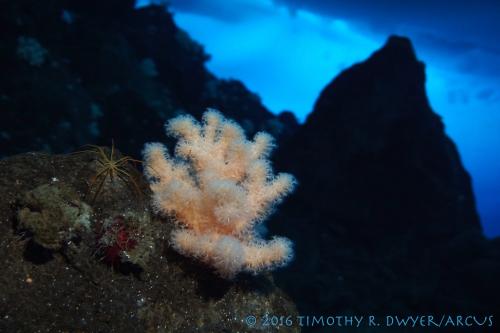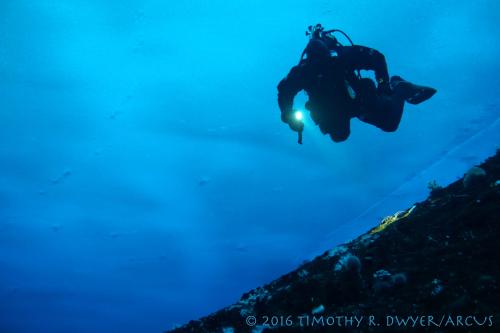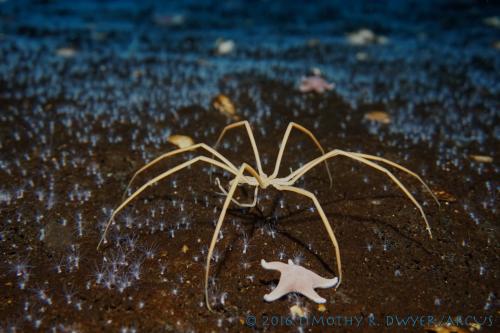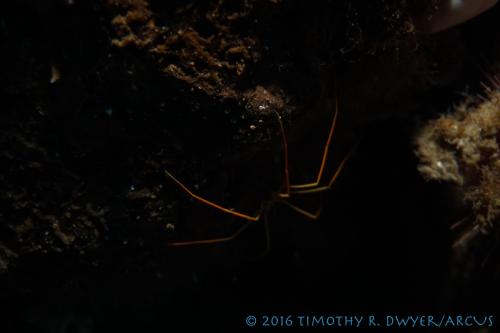 An Antarctic sea spider stalks its soft coral prey.
An Antarctic sea spider stalks its soft coral prey.
While it's a challenging practice and a breathtaking experience, the actual purpose of our scientific scuba dives is to study and collect sea spiders. These ancient animals are found throughout the global ocean from the deepest trenches to the shallowest bays. There are over a thousand species described and very likely hundreds more that have yet to be studied scientifically. They can tolerate the harshest environments the planet has to throw at them, including the toxic chemistry of deep sea hydrothermal vents, the daily wet and dry cycles of intertidal areas, and the ultra-chilled waters of the Antarctic.
 Steve Rupp spots a pycnogonid specimen to bring back to the lab.
Steve Rupp spots a pycnogonid specimen to bring back to the lab.
They are, of course, not really spiders. Like true spiders and all other members of the arthropod phylum, sea spider appendages are jointed, their bodies are divided into segments, and they have a tough external skeleton. Most species even have eight legs. But the physical similarities with true spiders end there. Sea spiders have no true respiratory organs and rely on diffusion of gases across their exoskeleton in order to supply their body tissues with oxygen. Their reproductive organs fill much of the insides of their legs; males carry eggs deposited by females on specialized legs called ovigers and care for them until the larvae hatch and crawl away. Most species are slow moving, opportunistic predators or scavengers and use a sucking mouth organ called a proboscis to feed on soft-bodied prey like jellyfish, anemones, bryozoans, worms, and seaweeds.
 A giant sea spider towers over a field of polyps.
A giant sea spider towers over a field of polyps.
Species belonging to the taxonomic class Pycnogonida are members of an ancient line of arthropods that date back at least to the Silurian period, around 425 million years ago (this is about the time that the first plants began colonizing land - that far back in the story of life). Pycnogonids don't fit very well within the other common groups of marine arthropods like the chelicerates (horseshoe crab relatives) and the crustaceans (crabs, shrimp, lobsters, etc.). In fact, despite their "cosmopolitan" distribution, pycnogonids are not very well studied and scientists are still working on how close to the trunk of the tree of life to place them. And while their evolutionary position is an interesting question, the group of scientists I'm working with here are in Antarctica because in the Earth's polar oceans, pycnogonids get very, very big.
 Science is still in the dark about many aspects of sea spider biology.
Science is still in the dark about many aspects of sea spider biology.

Comments